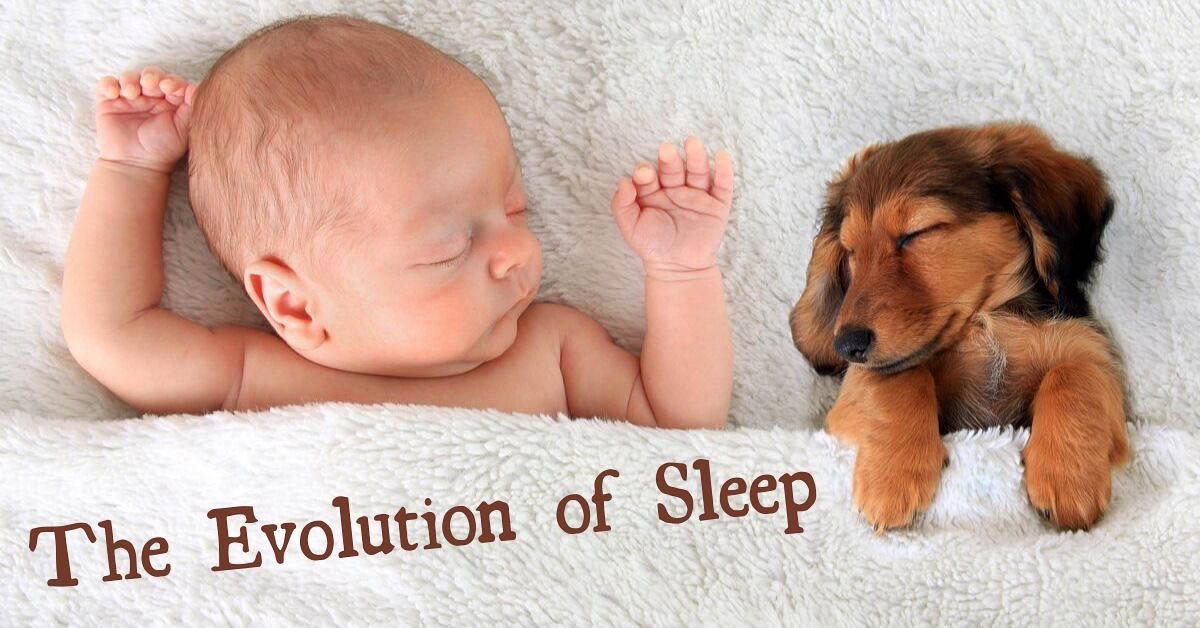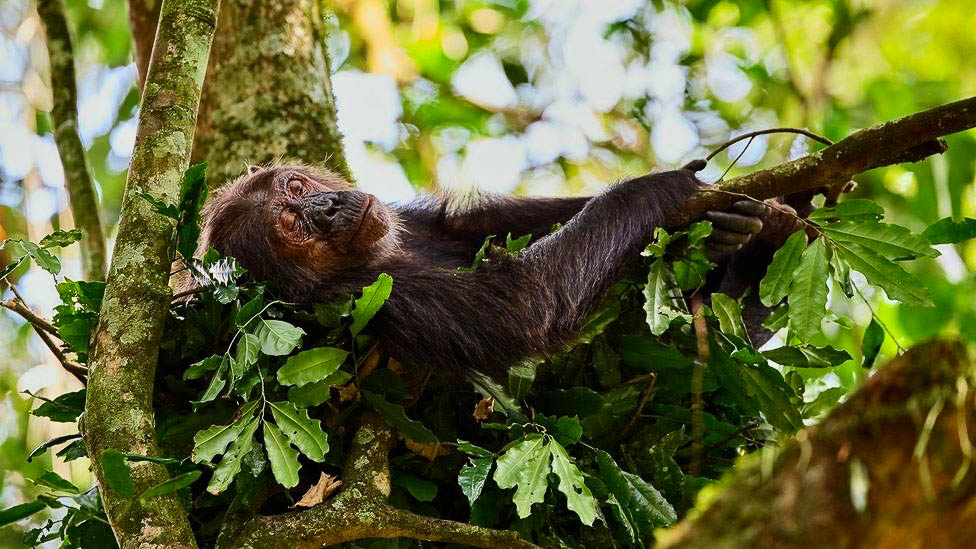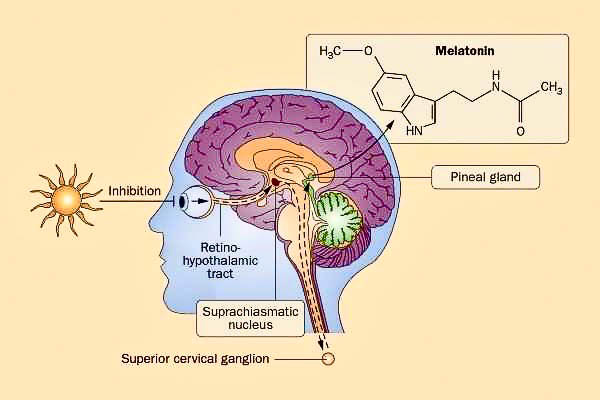ePostcard #162 Sleep Matters!
Photo Credit: Dr. Dan Jensen, Sound Sleep Medical (Sound-Sleep-Medical-The-Evolution-of-Sleep)
THE IMPORTANCE OF SLEEP
Even a soul submerged in sleep is hard at work
And helps make something of the world.
HERACLITUS
We are all guilty of sacrificing a few hours of sleep to finish an exciting project, a good book, or to meet work deadlines. Quoting from neurosurgeon Dr. Sanjay Gupta’s recent book—Keep Sharp: Build a Better Brain at Any Age — “Fully two thirds of us who live in the modern, developed world are chronically sleep deprived. That’s tens of millions of us.” After suffering and recovering from a severe concussion in 2018 and being diagnosed with severe sleep apnea in 2020, I’ve been forced to accept my “life sentence” on a CPAP machine at night and to educate myself on the full spectrum of health issues resulting from inadequate amounts of restorative sleep.
The word apnea is defined as the temporary cessation of breathing during sleep. In my case, a multi-night sleep study provided evidence that I stopped breathing 60-80 times an hour (>30/hr = severe sleep apnea). Brain cells require a near-constant supply of oxygen or they die. Ideally, the blood oxygen saturation levels (SpO2 ) of a healthy person should register between 94% and 100%. My oxygen saturation levels dropped into the dangerous zone of the 80’s and high 70’s every night, which explained many of my troubling symptoms. Given the risks associated with my diagnosis— impaired brain function and cognition, heart rhythm abnormalities, stroke, and heart attack—I’m grateful for the research that has made sleep therapy with a CPAP machine possible in a way that encourages me to prioritize my own health and mental wellness.
If you are having trouble sleeping and are experiencing bouts of brain fog and a level of daily fatigue that seems unusual for you, reach out to your physician. Sleep apnea can be a serious health risk for adults and children at any age. As I learned the hard way, denial is not an option when it comes to sleep apnea. There is an entire branch of medicine devoted to treating sleep disorders. Take advantage of their expertise. Sleep apnea therapy works and you’ll feel the benefits within a few days. Can CPAP therapy be a bit annoying? Yes, but if you take the time to understand how the brain works during restorative sleep you will quickly appreciate why the physiological and mental impacts of poor sleep need to be treated and overcome.
As we discussed in ePostcard #161, the circadian rhythm is essentially an intrinsic timekeeping mechanism that enables organisms to temporally organize behavioral, physiological and molecular events within a 24-hour day/night cycle. It is a critical part of the body’s internal biological clock, running in the background to carry out essential functions and processes, playing a vital role in virtually all systems of the body. One of the most important and well-known circadian rhythms in humans is the sleep-wake cycle.
When you sleep, your brain goes through natural cycles of activity. There are four total stages of sleep, divided into two phases: REM (rapid eye movement) and NREM (non-rapid eye movement). As you sleep, your body cycles through non-REM and REM sleep. Non-REM sleep happens first and includes three stages. You usually start the sleep cycle with stage 1 of non-REM sleep. You pass through the other stages of non-REM sleep, followed by a short period of REM sleep. The last two stages of non-REM sleep are when you sleep deeply. It’s hard to wake up from this stage of sleep. REM sleep happens about an hour to an hour and a half after falling asleep, and is when you tend to have vivid dreams. This normal sleep cycle repeats throughout the night until you wake up in the morning.
Most modern sleep studies rely on well-founded electrophysiological correlates of normal behavioral sleep. Electrical activity in the brain is detected by electrodes and converted into an electroencephalogram (EEG) from which signals characteristic of behaviorally defined sleep and wake can be identified. When performed in conjunction with electromyography (EMG), this approach allows researchers to divide the time course of sleep into two main stages, rapid eye movement (REM) and non-rapid eye movement (NREM) sleep, based on muscle tone and the frequency composition of the EEG signal.
THE EVOLUTION OF SLEEP
Photo Credit: This photo, courtesy of Alamy, originally appeared in an article by Elizabeth Preston in Knowable Magazine (24th May 2022), under a Creative Commons License. Reference: C.L. Nunn and D.R. Samson/American Journal of Physical Anthropology 2018.
Although chimpanzees and bonobos are our closest living primate relatives, their sleep patterns are remarkably different from our own. Humans, in fact, sleep on average 7 hours—less than any ape, monkey or lemur that scientists have studied. Chimpanzees sleep 9.5 hours out of every 24. Several sleep pattern research studies have shown that people in non-industrial societies (hunter-gatherers and pastoralists living traditional lifestyles without electricity) – the closest thing to the kind of setting our species evolved in—average between only 5.7 and 7.1 hours a night. Why so little? Obviously, there is no simple answer to sleep duration patterns or sleep disorders in modern humans.
Millions of years ago, our ancestors lived, and probably slept, in trees. Today’s chimpanzees and other great apes still sleep in temporary tree beds or platforms they create. Our ancestors transitioned out of the trees to live on the ground, and at some point started sleeping there too. This meant giving up the advantages of arboreal sleep, including relative safety from predators like lions. In a recent study in the journal Evolutionary Anthropology, David Samson and his colleagues compared the sleep intensity of humans to that of hundreds of mammals and 21 primate cousins. Humans, it turns out, are far more efficient sleepers. According to Samson, “We have evolved to get better quality sleep with just seven or eight hours; some primates need up to 17 hours.”
Apparently, the key to explaining human sleep duration patterns is REM (rapid eye movement) sleep. The purpose of the REM state remains a bit mystifying, even by the standards of researchers immersed in the world of sleep science. It’s thought to be associated with memory, brain development and dreams. Some studies have found that sleep, particularly deep sleep, is associated with clearing out molecular waste in the brain. Today’s humans — our lives back-lit by the inescapable blue glow from our electronic devices — spend 22 percent of our time sleeping in the REM phase.
Photo Credit: Audrey DeLella Benedict, Namibia 2012. On dry nights, the San hunter-gatherers of Namibia often sleep under the stars. They have virtually no electric lights and no addiction to social media postings keeping them awake. Yet, when they rise in the morning, they haven’t gotten any more hours of sleep than city dwellers whose lives are backlit by the glow of their smart phones. But the San do not suffer from sleep disorders, like their city counterparts, because their sleep is restorative..
SLEEP AND YOUR BRAIN
Sleep timing and duration in humans is determined, in part, by a master circadian clock entrained to local time by retinal inputs encoding environmental light-dark cycles. The clock is phase delayed by light in the evening and early night, and advanced by light in the late night and early morning. With industrialization and on-demand access to electric lighting, exposure to evening light has increased, while exposure to natural light during the day has decreased. Lifestyle changes (indoor versus outdoor activities) also play a role. The expected net effect is a delay in the phase at which the circadian clock aligns with local time, and thus a delay in the timing of the circadian sleep-wake cycle.
Diagram Credit: Courtesy of the American Chemical Society. When a part of the brain called the suprachiasmatic nucleus does not detect light, the pineal gland is free to produce melatonin, which makes us feel drowsy. Source: Polish Physiological Society © Konturek, S. J., Konturek, P. C., Brzozowski, T. & Bubenik, G. A. J. Physiol. Pharmacol. 58 (Suppl. 6), 23–52 (2007)
To maintain our human 24-hour sleep schedule, our bodies translate information about time of day into melatonin production. Melatonin—a hormone released by the pineal gland—helps you feel sleepy once the lights go off. The amount of melatonin in our bodies starts increasing in the evening and peaks in the middle of the night, letting us know it is time to sleep. It then decreases by morning, allowing us to wake up refreshed. This process starts in the eye’s retina. When the retina is exposed to light, a signal is relayed from the retina to an area of the brain, called the suprachiasmatic nucleus, which plays a role in making us feel sleepy or wide awake. The suprachiasmatic nucleus sends signals to other parts of the brain that control hormones and body temperature. Then, signals travel from the brain down the spinal cord and back up to the pineal gland, a small pinecone-shaped organ in the brain where melatonin production takes place. During the day, such signals prevent the pineal gland from producing melatonin. But when it is dark outside, these signals are not activated, and the pineal gland is able to produce melatonin.
Physiological changes in our bodies and other environmental factors can cause human circadian rhythms and the natural light-dark cycle to be out of sync. In the previous ePostcard on circadian rhythms we discussed jet lag and shift work changes among the environmental factors that can confuse the light-dark cycles to which we are adapted. Research over the past decade has shown that the disruption of sleep by extended photoperiods (day length), moonlight, and artificial light suppresses sleep and impairs performance in humans and non-human animals alike. When you add our modern addiction to our favorite electronic devices (smart phones, desk computers and laptops, and big screen TV’s) and all the other artificial light sources at night to the restorative sleep equation, you can imagine the many ways in which our lifestyle choices disrupt our biological clocks on a daily basis.
When we are afflicted by ongoing sleep disruption, this in turn affects our oxygenation levels and can subsequently put our brain health at risk. Multiple studies of people impacted by severe sleep apnea show a decrease in both gray and white brain matter, which can contribute to memory loss, cognitive and executive dysfunction, and other neurological impairments. Sleep Apnea (both obstructive and central), along with excessive dynamic airway collapse, snoring and sleep disordered breathing, affect almost 20% of the population or more than 936 million people worldwide. It may be even more of a problem as we age.
Consistently healthy sleep patterns set the stage for the cognitive and restorative functions that are of vital importance in the lives of all animals. Consolidating memories to access later is a vital link in the memory-creating process that occurs during sleep. When sleep is disrupted, people have trouble incorporating and categorizing their experiences, which leads to impaired memory formation and forgetfulness.
Chronic sleep deprivation clearly impairs cognition, which is broadly defined to include attention, motivation, visual-motor coordination, emotional stability, communication, short- and long-term memory, and executive functions related to decision making. Can you guess what hormones are impacted by insufficient sleep? Estrogen, progesterone, and thyroid hormones. When you don’t sleep well, cortisol levels are high when you wake up in the morning. That elevated level can disrupt the normal dance between estrogen and progesterone, and can cause your thyroid to slow down, which can then affect your metabolism by slowing it down. The cascade of neurological and physiological problems that result from chronic sleep deprivation continue to drive ongoing research in laboratories around the world.
To help build global awareness, we would appreciate it if you would share this post with your friends and colleagues. Please choose one of the options below which includes email and print! Thank you.





Thank you AUDREY for such wonderful messages. We have so enjoyed the Sanjay Gupta books…. I just finished “Keep Sharp” and ready to start his “12 weeks…”
You are amazing and have blessed us so many times….thank you. Love, Joan
Thank you Audrey for another interesting and valuable informative episode .
Audrey
Very informative. Quite a different approach
Certainly did enjoyed
Audrey, I support you entirely in that matter as I see the impact of lack of sleep on my patients and a fluid retention with its consequences is noticeable as a result of it.
Thank you for building the awareness!
Bozena
Dear Audrey,
I had wondered why your world postcards had suddenly shifted to circadian rhymes. I am glad you have learned about your sleeping trouble. I too read the AARP recommended Keep Sharp by Gupta, concentrating more on the food nutrition sections since as a window I am not as vigilant on what and how much I feed body’s engine. I am glad you mentioned the book and hope others will pick it up as well. Be well Audrey and lets get back to the human presence in our ‘new world’.
Best, Karen
Thank you, Audrey. This is a very late response to an old post which was of interest to me, and still is. I’ve often wondered about my own natural sleep rhythms, which are seasonally oriented here up north, and quite different than what is set out as normal or adequate sleep.
When I lie in bed and sleep for 8 hrs or more, I am a physical wreck – my back hurts, my body seizes up, everything hurts and is stiff. I am foggy and sleepy and disoriented all day. When I get up and move around and then go back to bed in a few to several hours, my body feels so much better. I don’t work 9-5 and always made my own work hrs when I did work, so I have this luxury that so many do not. I think it’s the pressure, in the industrialized world, of “having” to get up to go to jobs that fall in these hours – I think I sleep more like an animal – attuned to sounds around me, and I wake up easily and fall right back to sleep if no “danger.” or whatever woke me is attended. I have always felt the odd one out over my sleep patterns, since I normally need much less than the average 8-9 hrs recommended.
I just found a book in the library book sale called “Wild Nights” – all about just this subject and what sleep was like when we all were more attuned to the earth and wilder life before the industrial age. I look forward to reading it! ( I do suffer from forgetfulness, though. Another lifelong pattern, so maybe there is something to needing to get the sleep all at once.) Perhaps these circadian rhythms are like tides that ebb and flow through the day and night and if one catches the “waves” at the right times, one is rested. Who knows?